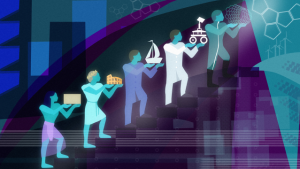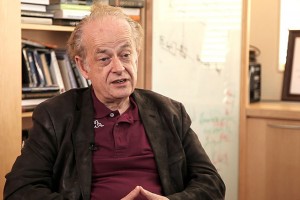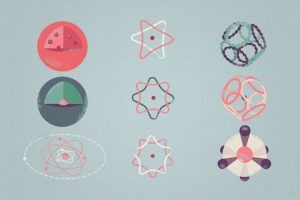From Bricks to Nanomaterials: The Evolution of Com...
How the simple idea of combining materials led to stronger buildings, lighter aircraft, flexible displays, and...

On February 3, 2015 Nature published a paper “Spectrally Shaped DP-16QAM Super-Channel Transmission with Multi-channel Digital Back Propagation” about new ways of optical fiber communications. We have asked one of the authors of this research, Dr. Robert Maher from UCL, to comment on this work.
The amount of information that can be sent over an optical cable is not infinite. The global demand for Internet data is rising at a phenomenal pace, and within a short period of time (~ 10 years) this demand will exceed the amount of data we can currently send over a fiber cable.
In order to send more data, more frequencies of light are being packed into a fiber cable. However, the large number of light signals being sent can interact with each other and distort, causing the data to be received with errors. This is currently a limiting factor for optical communications.
However, as this super-channel travels over the fiber cable, the light signals interact with each other and distort, causing the data to be received with errors.
Therefore, the key to our research development is based around how we receive and process the super-channel in order to undo this interaction. This was achieved using a state-of-the-art high speed super-receiver, which has the ability to capture a number of frequencies of light simultaneously. The multiple frequencies of light are first converted into electrical signals and are then processed at the same time, as one entity.
This is the source of the significant technological breakthrough reported in our paper. Once we have received a group of light channels (known as a super-channel), we can send them back on a digital virtual journey to undo the distortion that they experienced as they travelled over the fiber cable.
By eliminating the interactions between the optical channels, we can send a large amount of information over nearly double the conventional distance.
In this work we used a “16QAM super-channel” and our new technique allowed us to almost double the distance the signals can be transmitted error-free, from 3,190km to 5,890km, which is the largest increase ever reported for this system architecture.
Therefore, the idea came from understanding how optical channels interact as they travel over a fiber cable. Once we figured out how the channels interact with each other, we could then devise new processing techniques that could replicate this journey, but in the digital domain. The continuous evolution of high-speed electronic and optical sub-systems has been critical in achieving our goals and was a key enabling factor for this technological breakthrough.
The research field is focussed on increasing the capacity of optical networks. This includes new techniques to undo distortion experienced during fiber transmission, design of new fiber types and increasing the number of light channels than can be sent over a single fiber cable. We are at a very exciting point in optical communications research, where new and exciting technologies are being developed to ensure that future growth in Internet data can be sustained. The researchers now plan to test their new method on denser super-channels commonly used in digital cable TV (64QAM), cable modems (256QAM) and Ethernet connections (1024QAM).

How the simple idea of combining materials led to stronger buildings, lighter aircraft, flexible displays, and...

Physicist Federico Capasso on semiconductor materials, industrial process control, and beam engineering

Physicists observe single-molecule conductance behavior that could be important for future device technologies...